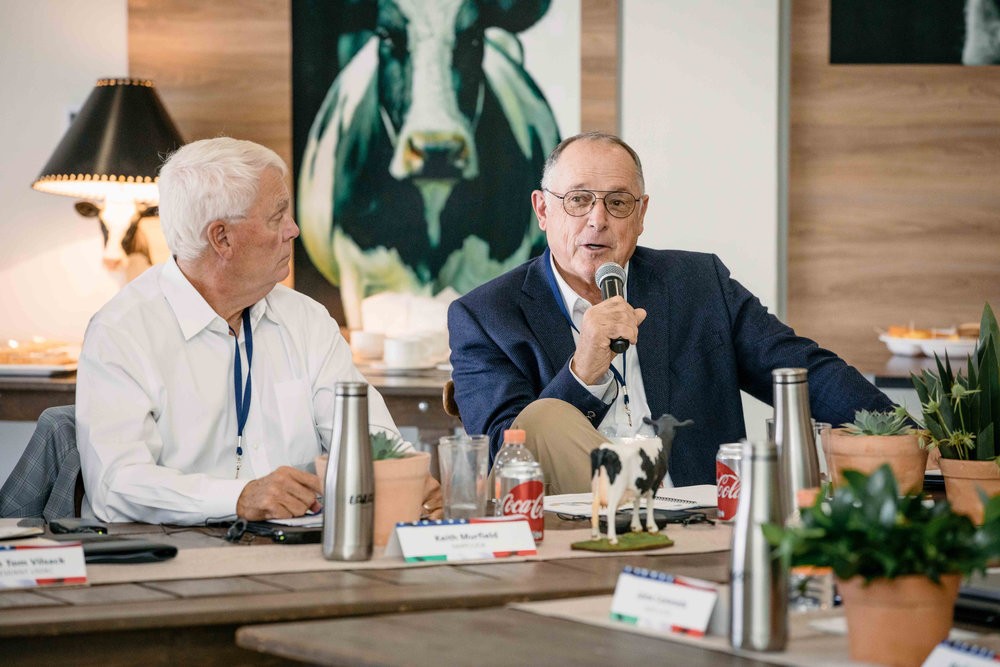
Relationships are just as important as the people making them.
Larry Hancock, Texas dairy farmer and chairman of the U.S. Dairy Export Council (USDEC), traveled to Mexico, the United States’ number one importer of its dairy products, on a trade mission trip. Hancock was joined by four other U.S. dairy farmers to learn about the dairy industry in Mexico, observe how U.S. dairy products are being utilized in the country, and discuss how the two countries can continue working together to advance the dairy industry and demand for its products.
Creating a “win-win” relationship is of utmost importance to Hancock, as dairy supply is very important to Mexico – a country that has a 60% dairy deficit.
“We don’t want to take their market; we want to help it grow. And what they can’t produce, we will supply,” Hancock said.
Annually, Mexico imports approximately $1.4 billion in U.S. dairy products, comprising of nearly 90% of its total dairy imports.
As part of the mission trip, USDEC arranged for U.S. dairy farmers to have opportunities to see their checkoff investment at work. One of those opportunities included touring grocery stores in Mexico to see how dairy products are marketed to consumers. Dairy products from the U.S. carry a sticker noting their origin location, aiming to increase the value of the product and meet the goal of greater demand for U.S. cheeses in Mexico. There is a difference in the cheeses, from the cheddars of the U.S. to the queso cheeses of Mexico.
And that difference, Hancock notes, is part of another grassroots checkoff effort: educating entry-level chefs on how to cook with cheddar cheeses. The goal is that more chefs will incorporate cheddar cheeses in restaurant recipes, thus showing consumers ways to incorporate cheddars in their meals at home. Increased usage of U.S. cheese in both restaurants and at the family table helps meet the goal of pushing demand for U.S. dairy products.
Hancock was adamant that U.S. dairy farmers need exports, stating that 95% of the population is outside of the U.S.; and in that population, the growing middle class desires more protein on their plate. To Hancock, that need for protein will be met with dairy and meat products.
Growing exports is obviously important, and in Hancock’s opinion, it needs to be done in a way that’s “not just dumping excess product at commodity price, but instead by selling higher quality products.”
In the end, Hancock comes back to the importance of relationships.
“Government leadership changes, but the dairy farmer suppliers do not,” Hancock said.
He believes in the value of farmer-members of the Mexican dairy industry meeting American dairy farmers. The two groups share many similarities, including concerns about trade, animal welfare activists, and milk alternatives. Discussions about those concerns and other industry issues provides opportunity for dairy farmers to find solutions together, thus helping to meet supply and demand goals.
From deliberations with Mexico dairy industry representatives, a joint statement was written and signed by both countries. The statement had 12 points, which included addressing shared concerns between the countries. Hancock summarized as the main goal being for the U.S. and Mexico to work together on dairy supply and demand.
Moving forward, Hancock reiterated the importance of trade missions. As a U.S. dairy industry leader, he sees his leadership efforts best spent driving U.S. dairy products “all the way to the consumer and doing it in a way that’s profitable.” And trade missions to tremendously valuable trade partners, like Mexico, fit the bill. Visit USDEC.org to learn more about the work being done to increase demand for U.S. dairy products.























